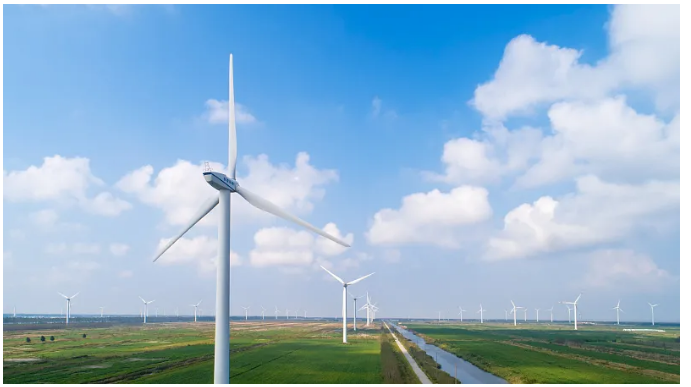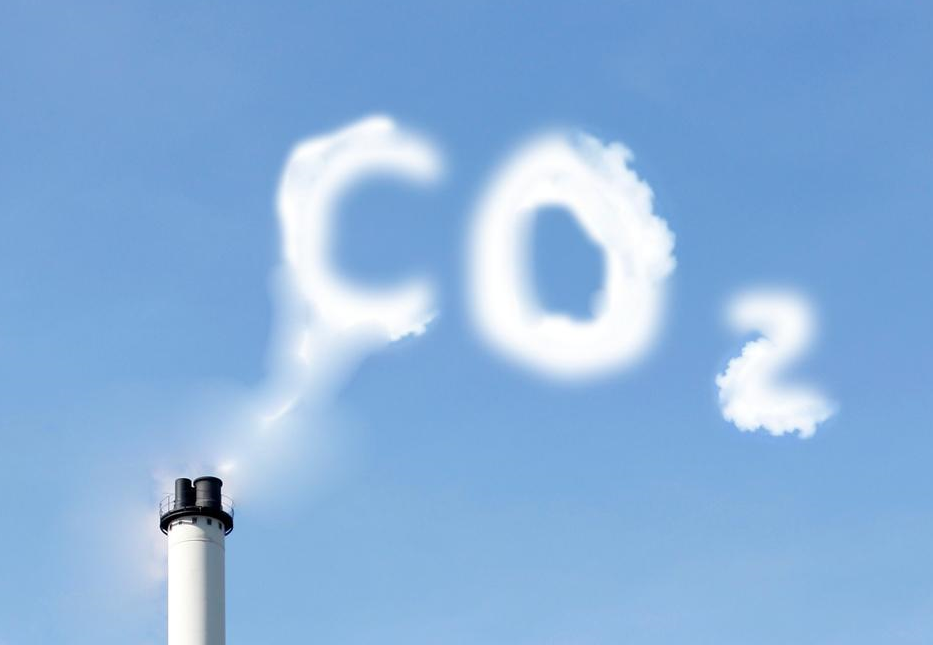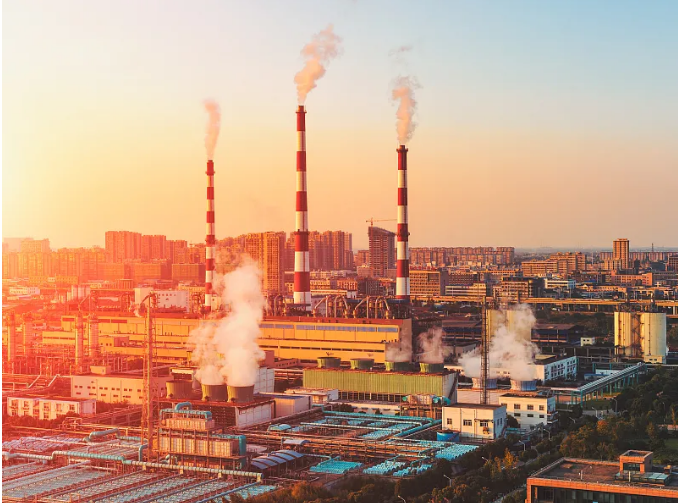"Although in terms of carbon intensity, Jiangsu is relatively low among sibling provinces and cities across the country, and the efficiency of carbon emissions is generally good, it is still relatively high in terms of total volume." Institute of Energy Resources, Provincial Strategy and Development Research Center Director Lai Li said that since the "13th Five-Year Plan", especially after 2016, Jiangsu has vigorously developed renewable energy and actively reduced coal. In recent years, the industrial structure and energy structure have been continuously optimized. However, the economy still maintains a medium-high growth rate, which shows that Jiangsu's economic development model has initially shown signs of decoupling from carbon emissions. However, during the "14th Five-Year Plan" period, a number of major projects in Jiangsu will be started one after another, such as Lianyungang Shenghong Refinery, Nantong Zhongtian Iron and Steel, etc., as well as chip manufacturing, new energy batteries, data centers and other new manufacturing industries, modern service industries and With the rapid growth of electricity consumption in residents' lives, Jiangsu's carbon emissions will continue to grow on the existing basis.
To achieve the goal of carbon peaking and carbon neutrality, according to national estimates, during the "14th Five-Year Plan" period, wind power and photovoltaics will be the main energy sources, and the annual installed capacity should reach 100 million to 120 million kilowatts. In this case, what should Jiangsu do?
"From a national perspective, at the end of the 13th Five-Year Plan, the proportion of non-fossil energy in energy consumption reached 15%, while that of Jiangsu was around 11%, with an average annual growth rate of 0.53 percentage points during the '13th Five-Year Plan' period. In the 14th Five-Year Plan, the state may raise the target to 20%, which means to increase the development of non-fossil energy to support the energy demand and development of the social economy. However, due to its own resource structure, the proportion of non-fossil energy in Jiangsu itself is lower than that of the whole country. Therefore, to increase to 20% in 2025, 9 percentage points in five years, the pace of progress is faster than that of the country.” Tang Xuewen, director of the New Energy and Renewable Energy Division of the Energy Bureau of the Provincial Development and Reform Commission, said that it is necessary to increase non-fossil energy sources. In addition to the electricity generated from outside the district and the power generation of Lianyungang nuclear power plants, the proportion of electricity only relies on wind power and photovoltaics. It is a very arduous task to "double and turn" on the original basis. "On the one hand, Jiangsu has a large base of photovoltaic and wind power, and it is difficult to achieve substantial growth; on the other hand, Jiangsu has limited land resources, and both photovoltaic and wind power occupy a certain amount of land. Therefore, one is to use more roofs, and the other is to develop towards the sea. "
The iron and steel industry is an important industry of carbon emissions. According to the "14th Five-Year Plan" to promote the high-quality development of the iron and steel industry, accelerating the promotion of low-carbon and green development has become the main direction of my country's progress towards a steel power.
Walking into the production workshop of Nanjing Iron and Steel Co., Ltd., the blue sky and white clouds, the trees and trees, and the neat roads connect the iron and steel intelligent manufacturing plant, which is completely opposite to the traditional impression of the smoke-filled environment of the steel factory.
"All the gas in the production process is recycled to achieve near-zero emissions, and all the gas is recycled for power generation, with an annual power generation of more than 2.5 billion kWh." Wang Changhua, deputy director of the company's safety, energy and environment department, introduced that the proportion of Nangang's power generation using secondary energy It has exceeded 56% of the electricity used in production. In addition, photovoltaic power generation is used on the roof of the factory building, with an annual power generation of over 30 million kWh. Rechargeable locomotives are used for train transportation instead of diesel locomotives, reducing carbon emissions by 26,000 tons per year.
Three questions: carbon emission trading, how does Jiangsu integrate with the whole country
On February 1, the "Measures for the Administration of Carbon Emissions Trading (Trial)" will be officially implemented, marking the official operation of the national carbon emissions trading system, and my country's carbon emissions trading will move from the pilot market to the national market.
The so-called carbon emission trading, referred to as carbon trading, is a market-oriented means to control greenhouse gas emissions. Compared with administrative means, it has the advantages of lower emission reduction costs for the whole society and flexible options for enterprises to reduce emissions. The data shows that since 2011, Beijing, Tianjin, Shanghai and other places have carried out the pilot work of carbon emission trading. As of November 2020, the pilot carbon market has covered nearly 3,000 key emission units in more than 20 industries including electricity, steel, and cement. , the cumulative quota transaction volume is about 430 million tons of carbon dioxide equivalent, and the cumulative transaction volume is nearly 10 billion yuan.
"The curtain of carbon trading will finally be fully opened, and we have already felt the heat in advance." As a leading one-stop comprehensive service provider for low-carbon energy conservation and environmental protection in China, Meng Zaoming, general manager of Beijing HeCarbon Environmental Technology Co., Ltd. There is a strong contrast in the temperature of the city. "There are too many people coming to consult from various places, and they have not appeared in the industry for so many years. Carbon trading is really too hot!"
Although not among the pilots, Jiangsu actually prepared for the full launch of carbon trading very early. "Carbon verification is the basis of carbon trading. It is equivalent to first checking the bottom line to see how much trading volume there is." According to Meng Zaoming, Jiangsu's carbon verification work has been carried out in an orderly manner, and a large amount of data has been accumulated. In recent years, Beijing and Beijing have As a service provider, Carbon has participated in carbon verification work with comprehensive energy consumption ranging from 5,000 tons to 10,000 tons of standard coal in Nanjing, Suzhou, Wuxi and other places.
On the basis of the completion of carbon verification, thermal power is the first industry to be included in the national carbon market after the opening of the national carbon market. The relevant enterprises will receive a certain carbon emission quota. Once the actual carbon emission exceeds the standard, they need to go to the carbon market to purchase the difference, which does not exceed the standard. Excess credit can be sold. At the same time, companies must continue to reduce emissions to cope with the tightening of free carbon emission quotas.
Public information shows that at present, there are 2,225 key emission units included in the national carbon trading quota management in 2019-2020, of which there are 216 in Jiangsu, accounting for nearly 10%, which has a certain pressure. "For us, we must try to reduce the cost of carbon emissions and the risk of compliance, so as to minimize the risk of compliance, minimize the cost, and maximize the value of carbon assets." A relevant person in charge of a participating company in Jiangyin said that carbon trading will indeed fail. Forcing enterprises to pay attention to carbon emission reduction and realize technological improvement, in the future, carbon will have a huge impact on enterprises as a valuable resource. "In the short term, we will face greater pressure, especially the proportion of free distribution will gradually decrease. , the overall cost of the power plant may increase to a greater extent, but we are confident that through technological progress and market mechanisms, we can play a role in achieving the carbon peaking goal and carbon neutral vision." The person in charge said.
Four questions: New energy transformation, where is Jiangsu's "confidence"
"At this time, the proposal of carbon peaking and carbon neutrality, as well as the full launch of carbon trading, is based on China's confidence in the low-carbon field. Many of our technical reserves in clean energy-related fields such as wind power, hydropower, and solar energy have already taken the lead in the world. "Meng Zaoming said.
In fact, the great progress of new energy technology is not a one-time achievement. At the Longyuan Rudong Offshore Wind Farm located on the coast of the Yellow Sea, it is known as the "Grand View Garden" for offshore wind turbines in the industry. The project includes 13 different models from 10 domestic and foreign manufacturers. At a glance, there are common three-blade units, and there are two-blade units at the forefront of the test. They are like "attack giants" fighting against the never-ending sea breeze.
"As early as 2006, Longyuan Rudong was connected to the grid as the first wind farm in Jiangsu Power Grid, which opened the prelude to the development of new energy in Jiangsu. After 15 years of rapid development, new energy has developed from sporadic supplementary power sources to the point Various alternative energy sources.” According to Lu Xiao, director of the State Grid Jiangsu Electric Power Co., Ltd. regulation center, during the “13th Five-Year Plan” period, the installed capacity of new energy in Jiangsu increased by four times, with an average annual growth rate of 32.9%. By the end of 2020, the province's total installed capacity of new energy has reached 32.31 million kilowatts, including 15.47 million kilowatts of wind power and 16.84 million kilowatts of photovoltaic installed capacity.







